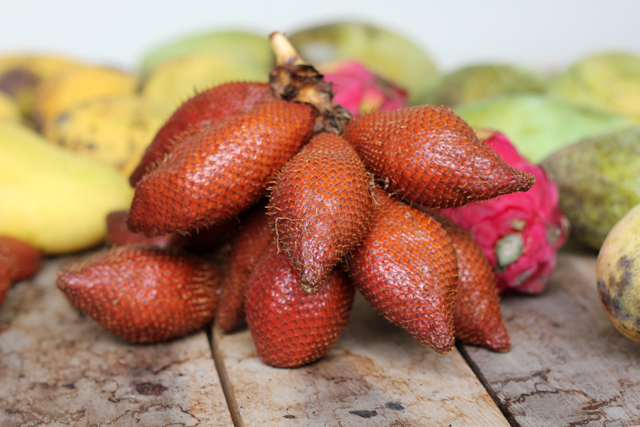Snake fruit often dubbed as Salaka originated in the Tropical rainforests of Indonesia. The plant belongs to arecaceae, the family of arecanuts. The Bali Salaka commonly known as Salacca zalacca amboinensis is the tastiest of Salakas.
Salaka is now commercially grown in almost all countries with tropical climate. The brownish red outer skin of fruit resembles the scales of snake and hence the name Salaka. The fruit is slightly prickly to touch. “Salak” in local language means bark. This fruit plant is actually a very short stemmed palm with long leaves. The fruits are grown in clusters at the base of the palm.
The Salaka fruit resembles a fig with distinct tip. The sharp pointed end is slightly pressed and the skin is slowly separated to consume the fleshy portion. The flesh contains three lobes with the larger ones with inedible seed. The lobes resemble garlic cloves in colour, texture and shape. The flesh is....

